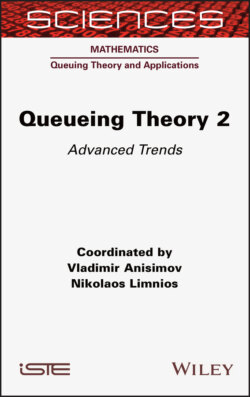Читать книгу Queueing Theory 2 - Nikolaos Limnios - Страница 22
1.11. Conclusion
ОглавлениеIn this chapter, we considered the stability problem for multiserver queues with a regenerative input flow. Let us note that stability analysis is an essential and challenging stage of the investigation of stochastic models. However, stability conditions may be of independent interest. In particular, the stability criterion of the multiserver model can be used for the capacity planning of a model and estimation of the upper bound of potential energy saving. The main contribution of our research is an extension of the stability criterion to the model with a regenerative input flow. The method we use has the following steps. First, we define an auxiliary process Y that is the number of customers that are served up to time t at the auxiliary system S0 in which there are always customers for service. Second, assuming that this process is a regenerative flow not depending on the input flow X under some additional conditions, we construct the common points of regeneration of Y and X. We call this step synchronization of the processes. This approach allows us to use results from the renewal theory for the stability analysis of the systems satisfying additional conditions. These conditions may seem too restrictive to be useful for the analysis of the real models. Therefore, we apply our approach to the stability analysis of two classical systems with service interruptions (sections 1.6 and 1.7) of the queueing system with preemptive priority discipline (section 1.8) and of the system with simultaneous service of a customer by a random number of servers (section 1.9). It follows from our results that the structure of the input flow does not affect the stability condition. We only need to know the intensity of this flow to estimate the traffic rate. But for the preemptive repeat different service discipline, the distribution of the service time plays an essential role, since the traffic rate is expressed with the help of the renewal function corresponding to this distribution. We obtain the upper bound for the traffic rate providing the sufficient stability condition. Note that this condition is the same as the condition obtained in Morozov et al. (2011) for a more simple model. Finally, in section 1.9 we give applications of our results for the estimation of the capacity of the automobile road, intersected by a crosswalk.
